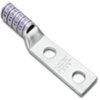I bought my Model S P85D in March 2015. Along with it I ordered the $750.00 wall charger.
I had an electrician hook it up and since he had #2 copper cables he gave me a price break (instead of the smaller #3, recommend as minimum by Electrical code for maximum amperage).
He placed it less than 10 feet from my 200 Amp service panel, using a 100 Amp breaker. He torqued down all the connections according to specifications.
Since I get free electricity at work, I never used the home unit, until last month. I came home later one Friday night around 1 AM. As I was planning to go out the next morning and wanted a full charge, I plugged in the wall unit and let it auto set to 80 Amps.
The next morning I awoke to find that very little charging took place. After I investigated the problem I found the wall unit no longer would charge. The house breaker was not tripped.
I opened the unit to find a lot of fire damage, and the internal fuse (100 A) was burnt out.
When I contacted Tesla, they said they would send out their electrician. After his investigation, he told me he could not see any reason for this small fire. He said they will probably replace the unit and he would be glad to “re-install it” for $500.00.
The Tesla people told me it was a “Loose Connection Problem” and they would not replace the unit.
I have not made up my mind if I want to spend another 750 dollars on something that will only charge at 50 amps. Larry Stringfield
I had an electrician hook it up and since he had #2 copper cables he gave me a price break (instead of the smaller #3, recommend as minimum by Electrical code for maximum amperage).
He placed it less than 10 feet from my 200 Amp service panel, using a 100 Amp breaker. He torqued down all the connections according to specifications.
Since I get free electricity at work, I never used the home unit, until last month. I came home later one Friday night around 1 AM. As I was planning to go out the next morning and wanted a full charge, I plugged in the wall unit and let it auto set to 80 Amps.
The next morning I awoke to find that very little charging took place. After I investigated the problem I found the wall unit no longer would charge. The house breaker was not tripped.
I opened the unit to find a lot of fire damage, and the internal fuse (100 A) was burnt out.
When I contacted Tesla, they said they would send out their electrician. After his investigation, he told me he could not see any reason for this small fire. He said they will probably replace the unit and he would be glad to “re-install it” for $500.00.
The Tesla people told me it was a “Loose Connection Problem” and they would not replace the unit.
I have not made up my mind if I want to spend another 750 dollars on something that will only charge at 50 amps. Larry Stringfield



